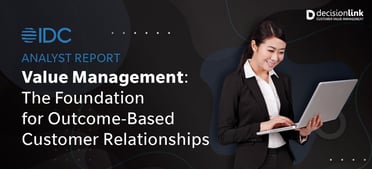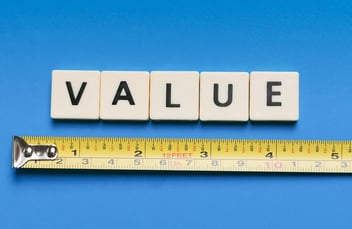The Value Realization Imperative

It is no longer a question of “if” we will face a recession. It is a matter of how bad it will be. Will it hit the technology sector? If so, how hard? How will companies rethink their business model, and their go-to-market strategies? And most importantly, how will they support their customers while they also go through turbulence of their own?
In our previous blog series, we introduced five recession busters on how to prepare for the recession and how to go through it without losing too many feathers. One of the tips is to make a decisive and bold move in customer value management (CVM). This is step number one, and it is a matter of investing in the right process and platform as quickly as you can. Your renewals are depending on it.
Bottom line, customer value does not really exist until the customer realizes it fully.
If you have not read about CVM, I strongly recommend you get familiar with it. Part of CVM is the ability to demonstrate concrete and tangible value that you deliver to your customers day-in and day-out. Many companies fall short of explaining how they improve their customers’ profit & loss performance. Because typically, companies only focus on the beginning of the customer value management process. In a nutshell, they create lots of promises to a potential customer, they calculate the value they believe they can deliver, and the estimated value is reflected through their pricing.
While it may be a good start, it is not enough. Right now, there is a potential economic hurricane coming our way, and customers need much more information and assurance from the companies they do business with. They might agree with your value models or your business case, but they need demonstrable proof that the value they expect is being delivered to their business and realized to their bottom line.
Remember, your customers have to make difficult choices right now. They are laying off people and cutting on expenses left and right. Your goal as a preferred vendor is to stay top-of-mind, to become an indispensable part of their customer success, and to move your subscription fees from discretionary to the “must-have” spending category.
You will not achieve that by just telling your customer to trust that you are delivering value. They need to see it in writing. And they need validation from their internal teams that the value is real. And to make sure you weather the storm together, they need you to bring even more value to the table than ever before, and help them increase their performance.
Imagine right now two sales representatives visiting the same customer to check on their business and see how they are preparing for the recession. Here is the scenario:

Sales Rep for Company 1 visits the customer to discuss the state of the business, pains, and gains, and how they can help the customer during this recession. The sales rep is a trusted advisor and communicates to the client how well they work together the legacy relationship they have, and their value creation initiatives.

Sales Rep for Company 2 visits the same customer and cuts to the chase. She brings a Value Realization Brief to her executive, showing year-to-date the value the customer has realized and concrete progress towards annual value and business KPIs. She is able to tie a direct line between the investment and its resulting business outcomes.
Now, who do you think is going to have their contract renewed? Which company is considered a critical partner to the customer’s future success?
Bottom line, customer value does not really exist until the customer realizes it fully. It must be demonstrated in numbers using the KPIs customers live and breathe on a daily basis. And in times of recession, it is what is expected from trusted advisors.
In a recent IDC Report, Gerry Murray highlights why Customer Value Management is a measurement of lifetime value on both sides of a commercial relationship. It is designed to measure both the value of the solution to the customer and the value of the customer to the supplier on a continuous basis. It enables both parties to monitor and affirm the contribution the relationship makes to each of them. To learn more and see how it can help organizations achieve high NRR, download the full IDC Report.
Bio

Dr. Stephan Liozu (www.stephanliozu.com) is the Founder of Value Innoruption Advisors (www.valueinnoruption.com), a consulting boutique specializing in industrial pricing, digital business, and value models, and value-based pricing. Stephan has 30 years of experience in the industrial and manufacturing sectors with companies like Owens Corning, Saint-Gobain, Freudenberg, and Thales. He holds a Ph.D. In Management from Case Western Reserve University, and has written several books, including Dollarizing Differentiation Value (2016) and Value Mindset (2017).

 ValueCloud
ValueCloud
.png?width=118&height=76&name=Rectangle%20(3).png) ValueCloud Ignite
ValueCloud Ignite
.png?width=92&height=92&name=Rectangle%20(4).png) Free Assessment
Free Assessment
.png?width=100&height=100&name=Rectangle%20(5).png) Watch a Demo
Watch a Demo
.png?width=82&height=96&name=Rectangle%20(6).png) Value Calculator
Value Calculator

.png?width=62&height=51&name=Group%2010%20(1).png) Marketing
Marketing
 Sales
Sales
 Customer Success
Customer Success
 Engage Prospects
Engage Prospects
 Win Deals Faster
Win Deals Faster
 Retain Customers
Retain Customers
.png?width=62&height=62&name=Rectangle%20(8).png) Adopt and Scale
Adopt and Scale
.png?width=54&height=54&name=Rectangle%20(9).png) Cybersecurity
Cybersecurity
 Healthcare
Healthcare
.png?width=54&height=54&name=Rectangle%20(10).png) IT & Software
IT & Software




